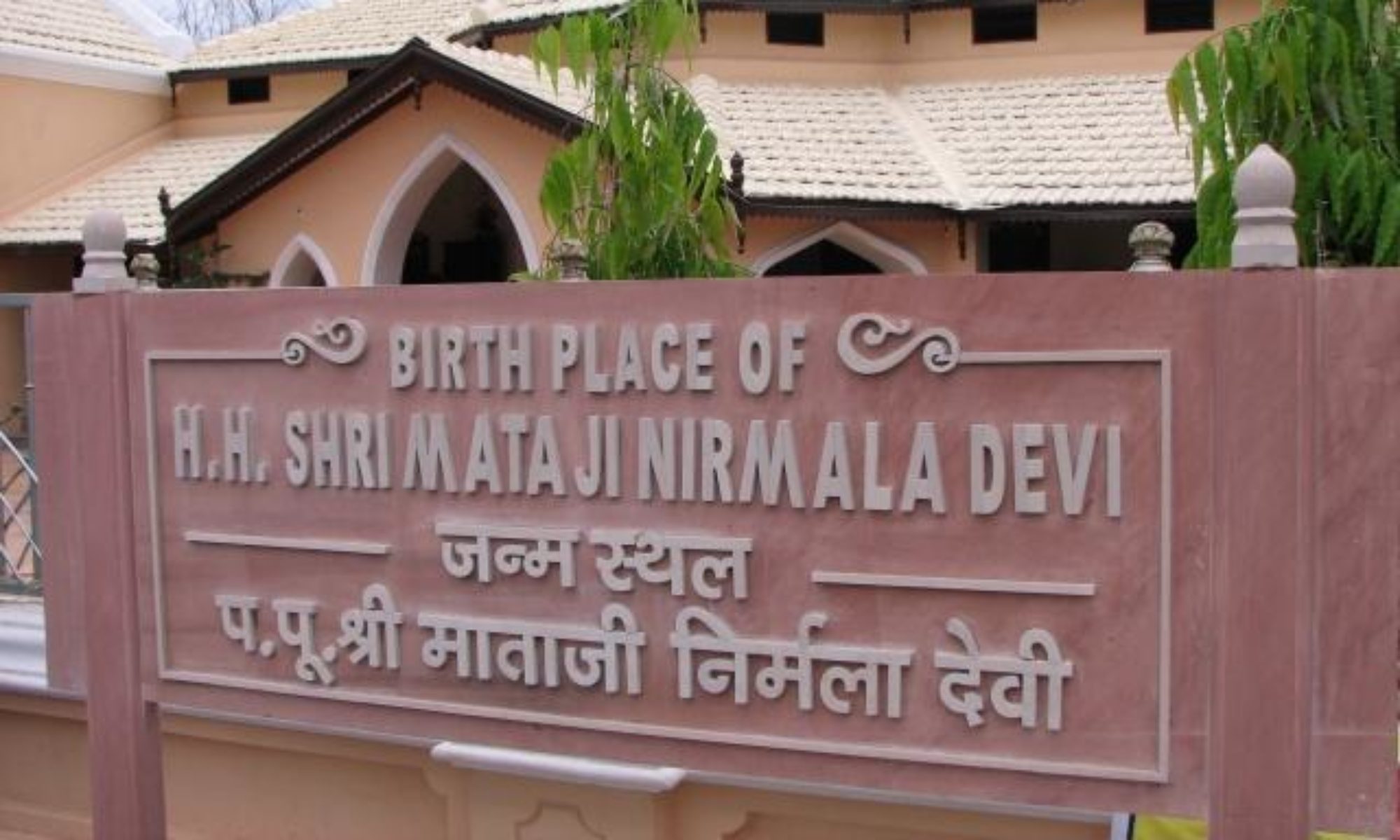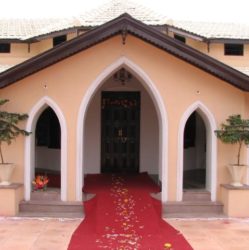Chhindwara Project – Mother’s Shrine
HH Shri Mataji was born on 21st March 1923 at Chhindwara, Madhya Pradesh. The holy Birthplace at Chhindwara had been in possession of non-yogis since Shri Mataji left Chhindwara to live in Nagpur. The House where Shri Mataji was born was acquired from the last occupant, Mr. Jamte by the HH Shri Mataji Nirmala Devi Sahaja Yoga Trust on 14th July 2005.
Immediately thereafter, conservation experts from the Indian National Trust for Culture & Heritage (INTACH) were commissioned to firstly, assess the extent of structural damage due to vintage of the building and secondly, to suggest a roadmap to restore the building to its original grandeur. The express mandate was to restore the building to its original facade and form and at the same time strengthening it such that this spiritual treasure can be preserved for all time to come. The report by the INTACH experts indicated that the building was not in good shape structurally and raised concerns due to damage to the wood used in the roof / doors / windows due to termites, leaking roofs, additional construction by new tenants that disturbed the original structure, damaged/ missing floor tiles, poor drainage etc.
The restoration philosophy agreed was that nothing was to be disturbed unless it posed a threat to the structural integrity of the building. All efforts would be made to repair any damaged component and it would be replaced only if the damage was irreparable. It was also decided that the replacement part would be exactly similar in appearance to the original to ensure that the original beauty of the Birthplace is maintained.
Consequently, the entire roof was removed tile by tile. Significant effort went in cataloging the location of each tile so that it would be restored to its original location after repairs. The wooden planks supporting these old earthen tiles were damaged beyond repair due to termites and water. These were replaced with new wood in the same pattern as the original structure. To ensure complete waterproofing and structural strength, sheets of prefabricated, toughened sheet of wood-ply were put on top of the wooden structure.
Thereafter, the original tiles, after being cleaned, were reinstalled in their respective locations. This roofing intervention was a success in addressing the concerns stemming from weakening wood beams, seepage and leakage in the roof and also restoring the roofing to its original condition. The roofing is a very visible component of the house as the roof is sloping and therefore this part of the project was critical in meeting the overall aim of the project.
The other major interventions were:
a) Replacing the damaged flooring. All the tiles in the house were removed, cleaned, polished and subsequently restored to their original location. The damaged tiles were replaced with new tiles of similar appearance. The tiles in the room in which Mother was born (the “Janamsthal”) were not taken out and were cleaned from the surface only.
b) Replacing old plaster & painting of the walls. The old plaster was damaged due to wear and tear and due to seepage in the Building. To address this problem, the entire plaster was removed by hand to avoid damaging the walls. The original plaster was carefully stored as it formed a critical part of the original structure. The water proofing of the walls was done and thereafter, the original plaster was mixed with new cement and reinstalled on the walls. A fresh coat of paint was put on the walls, again in the original shade as before.
c) Removing the extraneous constructions post Mother’s stay in the house. Several structural additions not in harmony with the overall design of the House were added by later occupants. There were all removed to restore the House to its original condition.
d) Concealed lighting and electrification of the house was also a major intervention. The original structure did not cater for electric wiring and the system installed by earlier occupants was inadequate. An entirely new system was installed without any visible disturbance to the structure.
e) Colored glasses for the doors/ windows matching the original specifications have been installed. Brass door knobs, latches etc. matching the original have been installed where missing and the existing installations, if in usable condition, have not been disturbed.
Meditation Hall
In the back side of the House, the horse stables and servant quarters have made way for a meditation hall with a capacity of approximately 500 Sahaja Yogis. The Hall has a basement, a mezzanine floor and a first floor. The Hall has been equipped with Air Conditioning and a modern crowd circulation pattern to ease movement of people. The Hall is in structural harmony with the overall structure with similar material as the main House being used in construction and with similar visual appearance. Care has been taken that the hall does not visually distract people from the main Shrine and therefore, is not visible from outside (hence the basement and not an additional floor).
As on 15th February 2007, the restoration work is almost complete and the Hall would be ready by end of April 2007.
Parikrama (Walk around Shrine)
Space has been made around the house so that Yogis can walk around the outside of the house to tour the Shrine. A route has been made for the Yogis to see the actual room in which our Holy Mother was born and thereafter see other aspects of the house. This route has been made to cater to the expected rush of Yogis in coming times and to allow everyone to see the Shrine in a systematic, organised manner.
Project Participations
- Chhindwara Collective represented by Mr. Prassanna Bakliwal
- Nagpur Collective represented by Mr. Siddhartha Gupta & Mr. Nafade
- MP collective (particularly Bhopal, Raipur, Chandapur) represented by Mr. Yogesh Lodha
- Meditation Hall design: Mr. Devpujari from Noida
- INTACH: Represented by Mr. Manu Bhatnagar
- Dr. Suresh Nigam has been entrusted with collecting all the Sahaj material related to Chhindwara for the Library there
- Australia Collective represented by Mr. Mike Fogaty
- Mr. Dinesh Rai: Coordinator of the Project
- …and several Yogis from around the Globe

